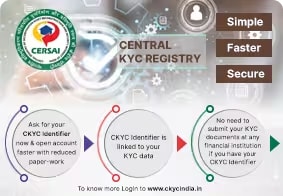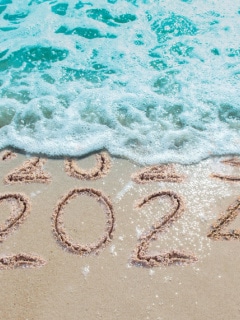Enjoy Zero Charges on All Commonly Used Savings Account Services
- About Us
- MD & CEO letter about the bank
- MD & CEO
- Our History
- Letter to Shareholders on the 1st Annual Report after Merger
- Letter to Shareholders on the 2nd Annual Report after Merger
- Letter to Shareholders on the 3rd Annual Report after Merger
- Letter to Shareholders on the 4th Annual Report after Merger
- Board of Directors
- Awards & Accolades
- News Room
- Investors
- Careers
- ESG
-
Customer care hotlineCall 1800 10 888
-
As per amendment in the Income Tax Rules, PAN or Aadhaar are to be mandatorily quoted for cash deposit or withdrawal aggregating to Rupees twenty lakhs or more in a FY. Please update your PAN or Aadhaar. Kindly reach out to the Bank’s contact center on 1800 10 888 or visit the nearest IDFC FIRST Bank branch for further queries.
-
-
FinFIRST Blogs
Credit Card
Credit Card Interest Rate Calculator: How it works
Summary: It's important to understand the interest rate you are being charged on your credit card, as it can have a major impact on how quickly you can pay off your debt. Using a credit card calculator can help you make payments on time and stay within your credit limit. This article explores credit card interest rates, how it is calculated, who determines the credit card interest rate, and a few details that must be checked in your monthly credit card statement besides your interest rate.
The outstanding credit card balance of Indian customers has increased by 27%, as of November 2022. While this indicates increased consumer spending, it inevitably leads to an increase in delayed bill payments. If you have swiped more than what you can repay this month or simply forgot to pay your bill, a credit card interest calculator should be your go-to tool.
A credit card interest calculator simplifies the calculation of the interest rate applicable against your credit card dues. In its absence, you must rely on the amount the credit card company calculates or try your hand at the formula yourself.
What is a credit card interest rate?
In the event of failing to repay your credit card dues, the card issuer levies interest on the overdue amount, called the ‘credit card interest rate’. Bear in mind, however, that if you pay your credit card dues on time, the bank will not apply this interest rate to your outstanding dues.
How to calculate credit card interest
Here’s the formula used by a credit card interest calculator -
[number of days since the transaction date X Outstanding amount X Annual interest rate] / 365
The amount so calculated increases further as GST is added to it. Calculating the interest as per the formula can be cumbersome, especially if there are multiple scenarios of defaults and payments. For this purpose, a credit card interest calculator tool becomes useful.
READ MORE
How a credit card interest calculator works
To understand how calculations run in a credit card interest calculator, let’s look at a few scenarios against the following information:
· Transaction date - 1 March
· Statement date - 7 March
· Due date - 27 March
· Transaction amount - Rs 1,00,000
· Total amount - Rs 1,00,000
· Minimum amount - Rs 5,000
· Interest rate - 42% per annum
Scenario |
Payment Details |
Interest Calculation |
Full payment on time |
· Payment date - 20 March · Payment amount - Rs 1,00,000 |
[20 X 1,00,000 X 42%] / 365 = Rs 2,301 (effectively Rs 0)*. |
Part-payment on time
|
· Payment date - 20 March · Payment amount - Rs 50,000 · Next statement date - 7 April · Transaction amount during the cycle ended 7 April - Nil |
· Till 20 March - [20 X 1,00,000 X 42%] / 365 = Rs 2,301 · From 21 March to 7 April - [17 X 50,000 X 42%] / 365 = Rs 978 · Total credit card interest = 3,279 |
Partial payment after the due date
|
· Payment date - 28 March · Payment amount - Rs 50,000 · Next statement date - 7 April · Transaction amount during the cycle ended 7 April - Nil |
· Till 28 March - [28 X 1,00,000 X 42%] / 365 = Rs 3,222 · From 28 March to 7 April - [10 X 50,000 X 42%] / 365 = Rs 575 · Total credit card interest = 3,797 |
Partial payment after the due date with subsequent transactions |
· Payment date - 28 March · Payment amount - Rs 50,000 · Next statement date - 7 April · Transaction amount during the cycle ended 7 April - 10,000 · New transaction date - 20 March |
· Till 20 March - [20 X 1,00,000 X 42%] / 365 = Rs 2,301 · From 20 March to 28 March - [8 X 1,10,000 X 42%] / 365 = Rs 1,013 · From 28 March to 7 April - [10 X 60,000 X 42%] / 365 = Rs 690 · Total credit card interest = 4,004 |
*No interest is charged as the total payment was made within the due date.
By taking a look at four of the many possible scenarios, you can surmise how credit card interest calculations change with even a small change in the transaction details. With credit card interest calculators, these calculations take place automatically.
When does the credit card interest rate come into play?
Continuing with the above example, let's assume that the statement date of your credit card is the 7th of every month, whereas the due date is the 27th of the month. While your bill is generated on the 7th, you get 20 days of the credit-free period to pay your bill.
During this period, you have the option of paying the total amount due (TAD) or the minimum amount due (MAD). The minimum amount due is generally 5% of the total amount due.
If you don't pay the MAD or the TAD by the due date, you will be charged interest on the outstanding amount and a late fee for non-payment of the MAD. If you pay the MAD by the due date, you avoid the late fee, but the interest is charged. Paying the MAD on time and the remaining amount over time is called a revolving credit facility.
Do note that interest is also charged on cash withdrawals made through the card in many credit cards. The interest applies from the withdrawal date to the date of full repayment.
Why you need to use a credit card interest calculator
Let’s consider a scenario where you don't use a credit card interest calculator.
If you always pay your credit card dues on time, you should be good. However, if you avail of the revolving credit facility, you have to rely on the interest calculations made by the credit card company. Their calculations are generally accurate. However, there’s always a possibility of missing out on some crucial information if you fail to monitor credit card interest rates or don't use a credit card interest rate calculator.
Rates and amounts - You need to monitor the credit card interest calculations or at least inspect the statement to know your MAD, annual percentage rate, or even how much credit card interest applies to you.
Impact of part payments - As demonstrated in the example scenario, part payments made at different times can affect your credit balance and the interest calculation. A credit card interest calculator will help you better understand payments and credit balances.
Stay up-to-date - Using a credit card interest calculator is recommended unless you always religiously make the TAD payment before the due date. Using it before or after making a part or delayed payment will help you better understand your interest cost.
Conclusion
Using a credit card interest calculator will keep you aware of and help avoid high interest rates. It’s also a nifty tool to help you compare credit cards and find a more beneficial one. Additionally, you can also improve the timing of your part payments helping you save money. It will eventually help you make informed financial decisions, improving your credit record too.
With IDFC FIRST Bank Credit Cards, your good credit card usage duly rewarded. Starting at 9%, IDFC FIRST Bank Credit Card interest rates can give even the cheapest secured loans a run for their money!
To get some of the best credit card interest rates, apply for a credit card with zero joining fees and zero annual fees.
Disclaimer
The contents of this article/infographic/picture/video are meant solely for information purposes. The contents are generic in nature and for informational purposes only. It is not a substitute for specific advice in your own circumstances. The information is subject to updation, completion, revision, verification and amendment and the same may change materially. The information is not intended for distribution or use by any person in any jurisdiction where such distribution or use would be contrary to law or regulation or would subject IDFC FIRST Bank or its affiliates to any licensing or registration requirements. IDFC FIRST Bank shall not be responsible for any direct/indirect loss or liability incurred by the reader for taking any financial decisions based on the contents and information mentioned. Please consult your financial advisor before making any financial decision.
The features, benefits and offers mentioned in the article are applicable as on the day of publication of this blog and is subject to change without notice. The contents herein are also subject to other product specific terms and conditions and any third party terms and conditions, as applicable. Please refer our website www.idfcfirstbank.com for latest updates.


 What's special about us
What's special about us




















